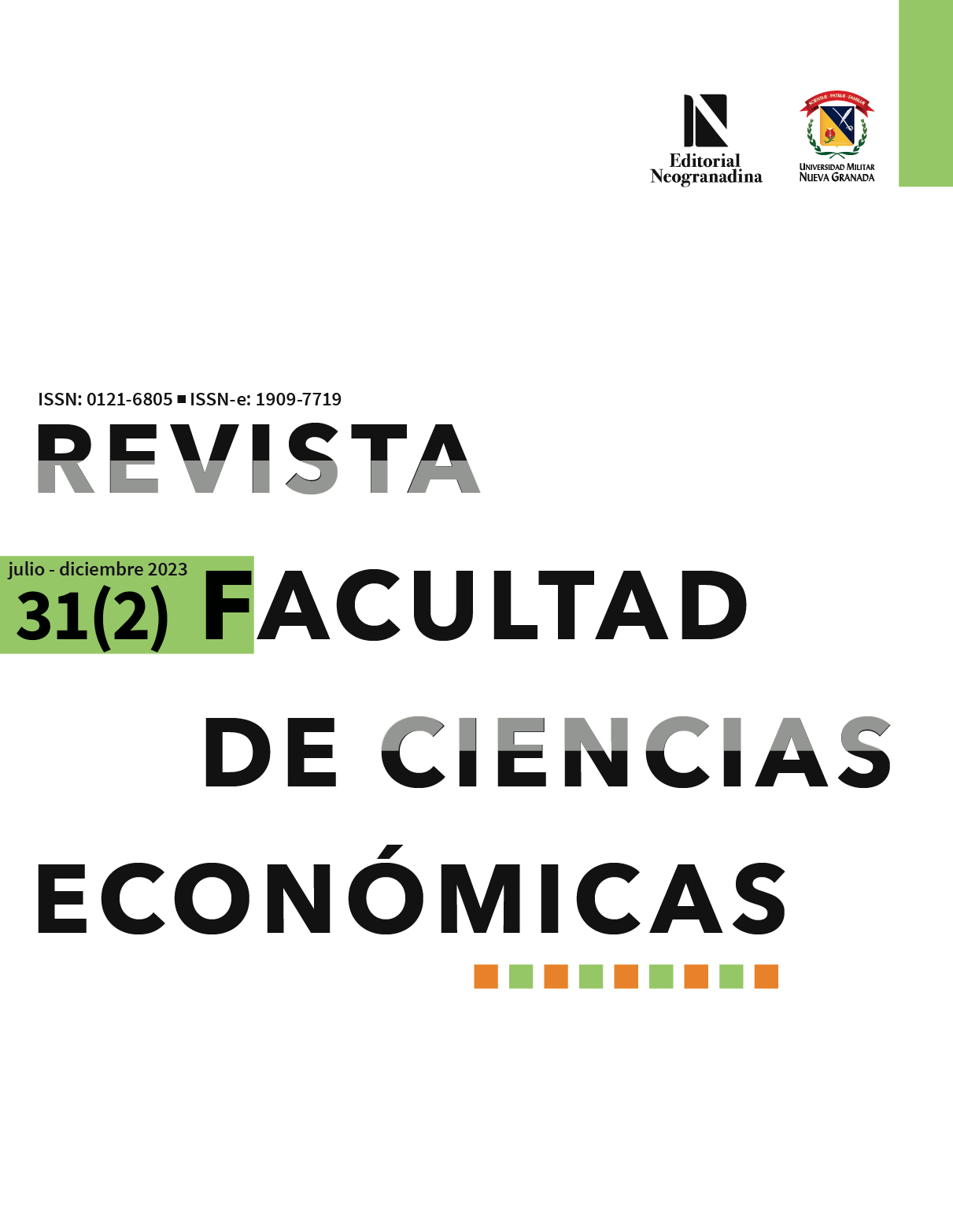Meaning of Money and Propensity for Indebtedness
Reflections of the COVID-19 Pandemic
Abstract
The context of the covid-19 pandemic has simultaneously generated social and economic restrictions,directly influencing the behavior and financial situations of individuals. Therefore, the aim of this research was to analyze the relationship between the meaning of money and the propensity for indebtedness among individuals in the educational environment in different regions of Brazil during the covid-19 pandemic. In order to understand this relationship, quantitative research was conducted with primary data (n = 521), collected from June to July 2020. Descriptive statistics, multiple regression, cluster analysis, and correspondence analysis were used to analyze the data. The results indicate that the studied population attributes different meanings to money, emphasizing culture and stability. Furthermore, it was observed that the value assigned to money and the propensity for indebtedness were influenced by behavioral and pandemic factors, and that gender and marital status influenced the variables studied. In summary, the results provide an empirical insight into how the propensity for indebtedness behaved during the pandemic period.
Downloads
References
Adamus, M., & Grezo, M. (2021). Individual differences in behavioural responses to the financial threat posed by the COVID-19 pandemic. Personality and Individual Differences, 179, 110916. https://doi.org/10.1016/j.paid.2021.110916
Barcellos, T. (2021). Endividamento dos brasileiros cresce mais que no resto da América Latina. Disponível em:https://economia.estadao.com.br/noticias/geral,endividamento-dos-brasileiros-cresce-mais-que-no-resto-da-america-latina,70003882614. Acesso em 19 de fevereiro de 2022.
Barros, S.C. & Borges, L.O. (2016). Significados do Dinheiro e do Trabalho: um Estudo com Operários da Construção de Edificações de Belo Horizonte. Interação em Psicologia, 20 (2),170-182. http://dx.doi.org/10.5380/psi.v20i2.34365 https://doi.org/10.5380/psi.v20i2.34365
Barros, S. C., Borges, L. O.; & Álvaro-Estramiana, J. L. (2017). Economic changes and the meanings of work and money. Revista de Psicología del Trabajo y de las Organizaciones, 33(1), 23-31. https://doi.org/10.1016/j.rpto.2017.01.001
Barros, S. C., Álvaro, J. L., & Borges, L. O. (2018). Significados do trabalho e do dinheiro:Quais suas funções sociais? Revista Psicologia: Organizações e Trabalho, 18(1), 282-290. http://dx.doi.org/10.17652/rpot/2018.1.13395
Barros, D. P., Ferreira, L. N., & Soares, I. T. D. (2021). Finanças pessoais: um estudo con professores da rede municipal de ensino do Capão Do Leão (RS). Revista GESTO: Revista De Gestão Estratégica De Organizações, 10(1), 55-73.https://doi.org/10.31512/gesto.v10i1.269
BCB - Banco Central do Brasil. (2021) Relatório de Estabilidade Financeira. v.20, n.1. Disponível em: https://www.bcb.gov.br/content/publicacoes/ref/202104/RELESTAB202104-refPub.pdf. Acesso em: 10 de julho de 2022.
Bezerra, A.C.V., Silva, C.E.M., Soares, F.R.G. & Silva, J.A.M. Fatores associados ao comportamento da população durante o isolamento social na pandemia de COVID-19. Ciência & Saúde Coletiva, 25(Supl.1):2411-2421, 2020.https://doi.org/10.1590/1413-81232020256.1.10792020
Cenci, C., Bona, C., Crestani, P., & Habigzang, L. F. (2017). Dinheiro e conjugalidade: uma revisão sistemática da literatura. Temas em Psicologia. 25 (1), 385-399. https://doi.org/10.9788/TP2017.1-20.
Cohen, D., Shin, F., & Liu, X. (2018). Meanings and Functions of Money in Different Cultural Milieus. Annual Review of Psychology, 70(1).https://doi.org/10.1146/annurev-psych-010418-103221
Cornea, D. (2021), "Credit card payments: do cultural values matter? Evidence from the European Union", Managerial Finance, 47(8), 1128-1148. https://doi.org/10.1108/MF-06-2020-0336 https://doi.org/10.1108/MF-06-2020-0336
Chan-Brown, K., Douglass, A., Halling, S., Keller, J., & McNabb, M. (2016). What is money? A qualitative study of money as experienced. The Humanistic Psychologist, 44(2), 190-209. https://doi.org/10.1037/hum0000024
Confederação Nacional do Comércio. (2022). Endividamento e Inadimplência do Consumidor. Disponível em: /https://portal-bucket.azureedge.net/wp content/2022/04/c558c63f7b16a479b157320c88a165ea.pdf. Acesso em: 10 de julho de 2022.
Czech, M., & Puszer, B. (2021). Impact of the COVID-19 pandemic on the consumer credit market in v4 countries. Risks, 9(12), 229.https://doi.org/10.3390/risks9120229
Dell'orto, G. & Doyle, K.O. (2001). Poveri Ma Belli: Meanings of Money in Italy and in Switzerland. American Behavior Scientist. 45(2), 257-271.https://doi.org/10.1177/00027640121957169
De Oliveira Campos, P., & da Costa, M. F. (2021). Regulatory focus and construal level theory on low-income consumer indebtedness: Evidence from an emerging market. International Journal of Emerging Markets.https://doi.org/10.1108/IJOEM-08-2020-0870
Doosti, B. A., & Karampour, A. (2017). The Impact of Behavioral Factors on Propensity Toward Indebtedness. Journal of advances in computer engineering and technology, 3(3), 145-152.
Doyle, K.O. & Doyle, M.R. (2001). Meanings of Wealth in European and Chinese Fairy Tales. American Behavior Scientist. 45(2), 191-204.https://doi.org/10.1177/00027640121957123
Faldetta, G. (2020), "The bright side of indebtedness", Society and Business Review, 15(1), 26-34. https://doi.org/10.1108/SBR-11-2018-0132
Fiksenbaum, L., Marjanovic, Z., & Greenglass, E. (2017). Financial threat and individuals' willingness to change financial behavior. Review of Behavioral Finance, 9(2), 128-147. https://doi.org/10.1108/RBF-09-2016-0056
Furnham, A., Wilson, E., & Telford, K. (2012). The meaning of money: The validation of a short money-types measure. Personality and Individual Differences, 52(6), 707-711. https://doi.org/10.1016/j.paid.2011.12.020
Flores, S. A. M. (2012). Modelagem de equações estruturais aplicada à propensão ao endividamento: uma análise de fatores comportamentais. Dissertação de Mestrado, Universidade Federal de Santa Maria.https://repositorio.ufsm.br/handle/1/4621
Gathergood, J. (2012). Self-control, financial literacy and consumer over indebtedness. Journal of economic psychology, 33(3), 590-602. https://doi.org/10.1016/j.joep.2011.11.006
Gutiérrez‐Nieto, B., Serrano‐Cinca, C., & de la CuestaߚGonzález, M. (2017). A multivariate study of over‐indebtedness' causes and consequences. International Journal of Consumer Studies, 41(2), 188-198.https://doi.org/10.1111/ijcs.12324
Hair, J. F., Black, W. C., Babin, B. J., Anderson, R. E, & (2019). Multivariate data analysis. UK: Cengage Learning.
Katona, G. (1975). Psychological economics. Elsevier.
Kurowski, Ł. (2021). Household's overindebtedness during the COVID-19 crisis: The role of debt and financial literacy. Risks, 9(4), 62.https://doi.org/10.3390/risks9040062
Lee, J., Yoo, J., Chin, M., Son, S., Sung, M., & Chang, Y. E. (2023). Pathways from economic hardship to couple conflict by socioeconomic status during COVID‐19 in Korea. Family Relations, 72(1), 60-76.https://doi.org/10.1111/fare.12771
Lopes, L. F. D. (2018). Métodos quantitativos aplicados ao comportamento organizacional. Santa Maria: Voix.
Mattei, L., & Heinen, V. L. (2020). Impacts of the COVID-19 crisis on the Brazilian labor market. Brazilian Journal of Political Economy, 40, 647-668.https://doi.org/10.1590/0101-31572020-3200
Melz, L. J., Vieira, K. M., Ceretta, P. S., & Gastardelo, T. A. R. (2014). Significados do dinheiro e propensão ao endividamento entre alunos universitários. Revista da Faculdade de Administração e Economia, 5(2), 76-103. https://doi.org/10.15603/2176-9583/refae.v5n2p76-103
Mendes Pereira, R. (2022). Endividamento e Qualidade de Vida: Um Olhar dos Servidores Públicos brasileiros. Revista De Estudos Sociais, 23(47).https://doi.org/10.19093/res9973
Moreira, A., & Tamayo, Á. (1999). Escala do significado do dinheiro: desenvolvimento e validação. Psicologia: Teoria e Pesquisa, 15(2), 93-105.https://doi.org/10.1590/S0102-37721999000200002
Moreira, A. S. (2002). Dinheiro no Brasil: um estudo comparativo do significado do dinheiro entre as regiões geográficas brasileiras. Estudos de Psicologia. 7(2), 379-387. https://doi.org/10.1590/S1413-294X2002000200019
Nascimento, E.S. Educação financeira em tempos de coronavírus. In: Liberali, F.C., Fuga,
V.P., Diegues, U.C.C. & Carvalhi, M.P.(Org.). Educação em tempos de pandemia: brincando com um mundo possível.1. ed. Campinas, SP: Pontes Editores, 2020.
Nigatu YT, Elton-Marshall T, Hamilton HA. (2023). Changes in household debt due to COVID-19 and mental health concerns among adults in Ontario, Canada. Int J Soc Psychiatry. 2023 May;69(3):774-783.doi: 10.1177/00207640221136795.
Oliveira, S. F. (2020). Influência dos Fatores Comportamentais na Propensão ao Endividamento dos Estudantes Universitários. Revista de Administração da UFSM. v. 13, n. 4, pp. 829-849. https://doi.org/10.5902/1983465935196.
Pereira Jr., A. (2020). O Sentido do Dinheiro na Teoria Projetiva da Consciência. In: Silva,
M.M & Santos, R. Da Consciência ao Inconsciente. Editora: CRV, 2020.
Pinto, N. G. M., & Rossato, V. P. (2019). Análise da propensão ao endividamento em um contexto universitário. Estudos do CEPE, (49), 115-130.https://doi.org/10.17058/cepe.v0i49.13787
Rahman, M., Azma, N., Masud, M., Kaium, A., & Ismail, Y. (2020). Determinants of indebtedness: Influence of behavioral and demographic factors. International Journal of Financial Studies, 8(1), 8. https://doi.org/10.3390/ijfs8010008
Ramsey, J. B. (1969). Tests for specification errors in classical linear least-squares regression analysis. Journal of the Royal Statistical Society: Series B (Methodological), 3(2), 350-371.
Ranyard, R., Mchugh, S., & Mcnair, S. (2017). The Psychology of Borrowing and Over-Indebtedness. Economic Psychology, 222-238. doi:10.1002/9781118926352.ch14
Resende, MFC., Terra, FHB & Ferrari Filho, F. (2021). Conventions, Money Creation and Public Debt to Face the Covid-19 Crisis and its Aftermath: A Post-Keynesian View. Brazilian Journal of Political Economy. 41 (2).https://doi.org/10.1590/0101-31572021-3260
Santoso, A., Rawi, R. D. P., & Ma'ruf, M. H. (2022). Era of The COVID-19 Pandemic: Ewuh Pakewuh Culture and Its Role on The Behavior of Someone in Debt, Based on Social Norms. Quantitative Economics and Management Studies, 3(1), 1-8 https://doi.org/10.35877/454RI.qems839
Silva, T.B.J., Sousa, A.M., Rengel, R. (2020). O que explica a propensão ao endividamento dos jogadores profissionais de futebol?. Revista Mineira de Contabilidade, 21(1), 56-68. https://doi.org/10.21714/2446-9114RMC2020v21n1t05
Serviços de Assessoria Serasa. (2021). Pesquisa 2021 endividamento. Disponível em: https://www.serasa.com.br/assets/cms/2021/Pesquisa-Endividamento-2021-Release-..pdf. Acesso em 04 de julho de 2022.
Stone, B., & Maury, R. V. (2006). Indicators of personal financial debt using a multi-disciplinary behavioral model. Journal of economic psychology, 27(4), 543-556. https://doi.org/10.1016/j.joep.2005.11.002
Tang, T. L. P. (1992). The meaning of money revisited. Journal of organizational behavior, 13(2), 197-202. http://www.jstor.org/stable/2488183
Tolotti, M. (2007). As armadilhas do consumo. Rio de Janeiro: Elsevier, 2007.
Viana, M. E. R. P., & Miguel, J. R. (2021). Desafios Pedagógicos e Emocionais do Professor Frente à Pandemia da Covid-19/Pedagogical and Emotional Challenges for theTeacher Facing the Covid-19 Pandemic. Id on Line Revista Multidisciplinar e de Psicologia, 15(56), 404-415. https://doi.org/10.14295/idonline.v15i56.3151
Wahono, H. K., & Pertiwi, D. (2020). Pengaruh financial literacy, materialism, compulsive buying terhadap propensity to indebtedness. International Journal of Financial and Investment Studies (IJFIS), 1(1), 1-14.https://doi.org/10.9744/ijfis.1.1.1-14
Walker, C., Burton, M., Akhurst, J., & Degirmencioglu, S. M. (2015). Locked into the system? Critical community psychology approaches to personal debt in the context of crises of capital accumulation. Journal of Community & Applied Social Psychology, 25(3), 264-275. https://doi.org/10.1002/casp.2209
Zaleskiewicz, T., Gasiorowska, A., & Vohs, K. D. (2017). The Psychological Meaning of Money. Economic Psychology, 105-122.doi:10.1002/9781118926352.ch7

Funding data
Copyright (c) 2023 Revista Facultad de Ciencias Económicas

This work is licensed under a Creative Commons Attribution-NonCommercial-NoDerivatives 4.0 International License.











